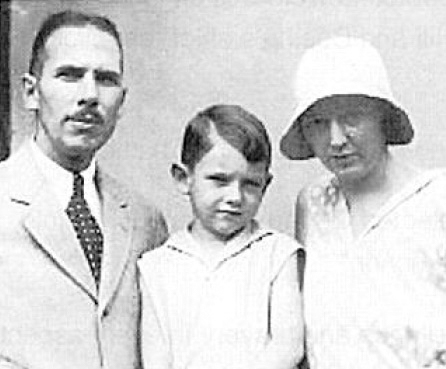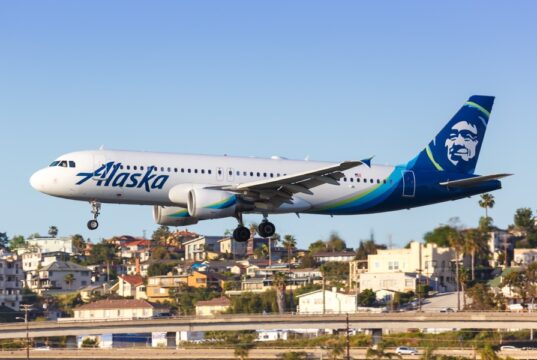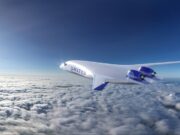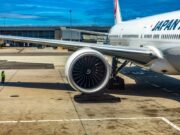
In light of the recent technical malfunctions with the Boeing 737-800 MAX aircraft, the tragedy once again, brings to mind the importance of the checks that are performed on aircraft before they are released to airlines, and especially to the pre-flight checks that occur before every flight. These checks are performed by the pilots to ensure that every working piece is in order and that the aircraft is prepared to safely complete the flight. This is now a routine task in aviation all across the world. However, this pre-flight check list was not always standard procedure. Airplanes flew for almost thirty years without any sort of official mandate to monitor the mechanics of the aircraft. But, in 1935 there was a plane crash on Wright Field, and the history of aviation was changed ever after.

In 1935, the Boeing 299 was released to be flown as a brand new, updated military aircraft. On a nice October day at Wright Field in Dayton, Ohio, Ployer Peter Hill climbed aboard the 299 in anticipation of a routine takeoff. Hill was one of the Army Air Corps’ top test pilots, and the flight was to be an experimental one, working out any kinks to ensure the aircraft was airworthy. Unfortunately, within moments of takeoff, the aircraft began to shudder, unable to ascend correctly, and tragically crashed, killing Hill instantly. One other person was killed and three others sustained injuries.

An investigation into the crash showed that a clamp for the elevator flight control had not been removed before the flight took off, causing the airplane to lose a lot of input range in its pitch. It had been an avoidable loss that caused the U.S. Military to take a hard look at what could be done to prevent such an incident in the future. The result was a series of safety checks that became part of the first established safety management system in the history of aviation. Soon after this system was implemented in the military, it was adopted by commercial airlines as well, ultimately becoming a practice within aviation throughout the world.
Pre-flight check lists help target the details so that pilots are completely focused on getting the flight out as safely as possible without the added stress of potentially forgetting a memorized set of checks. The Model 299 was taken out of service, updated and some changes were made. It became the B-17 Flying Fortress.
Major Ployer Peter Hill was a test pilot for the Army, and during his military career he flew over 60 of the Army Air Corps’ aircraft, evaluating their capabilities. He was killed just prior to his 41st birthday, leaving behind a wife and son, also named Ployer P. “Pete” Hill. Pete followed in his father’s footsteps, joining the military at the start of WWII, and became a career officer in the Army Air Services. He married and became father to ten children. Some of Pete’s children were not yet born when Major Hill, their grandfather, was killed in the crash. Doug Hill was one of those who did not get to meet his famous grandfather. Doug was however, inspired by the careers of his father and grandfather. He attended the United States Air Force Academy and went on to have both highly established military and commercial careers as a pilot over the next 40 years.

Doug’s father was very young when Major Hill perished, and the elder rarely talked about his deceased dad. Doug commented on his grandfather’s legacy, marveling at the impact Major Hill’s death left on the entire industry of aviation worldwide; “My father never really talked about my grandfather much when I was growing up. He was eleven when his father died, and he didn’t seem to want to discuss it very often. But my father was smart and graduated from MIT, he lived out the rest of his flying career in a way that would have made my grandfather proud.” As an added honor, in 1939, the U.S. War Department renamed Ogden Air Depot in Utah to Hill Field, and in 1948, to Hill Airforce Base. For visitors to the base, there is also a museum with free admission where patrons get an up-close look at some of the rich history of aircraft, pilots, and those who changed the path of aviation forever.
Doug thinks of Ployer Hill every time he sits down in the flight deck, preparing to run through the safety checklist prior to takeoff. “I’m happy that I am a direct recipient of a lesson learned, with every single flight.” He is thankful that his grandfather’s early passing contributed to aviation in a positive way. “I just know he would have been really proud of what came after his death. And it’s definitely something to be proud of.”
An additional posthumous honor was bestowed upon Major Ployer Peter Hill in 1939. The Ogden Air Depot in Utah to was renamed Hill Field by the U.S. War Department, and in 1948, it became Hill Air Force Base. Visitors to the base enjoy a museum with free admission where patrons get an up-close look at some of the rich history of aircraft, pilots, and those who changed the course of aviation forever.

Doug Hill, retired Air Force officer/retired airlines captain and Major Hill’s grandson, contributed to this story. Doug’s career was influenced by the Air Force careers of his father and the grandfather he never knew. Every time he climbs behind the controls, he is reminded of the contribution that was inspired by the tragic loss in October 1935. Doug provided, “In 1932 my grandfather was based at Wright Field (currently Wright Patterson Air Force Base) just outside Dayton, Ohio. During this tour, he was promoted to Chief Test Pilot for the Army Air Corps. In this capacity he flew 66 different aircraft from a variety of manufacturers. Among them were the Boeing P-12, Bellana C-2, Curtis P-6, Douglas C-47, Consolidated A11, Martin B-10, and finally, the Boeing 299. The Boeing 299 came to be the B-17, the Flying Fortress, which was used extensively throughout the Second World War. This aircraft helped develop the tactical strategy of high altitude, daylight, precision bombing which helped bring an end to the war in Europe.”







































































